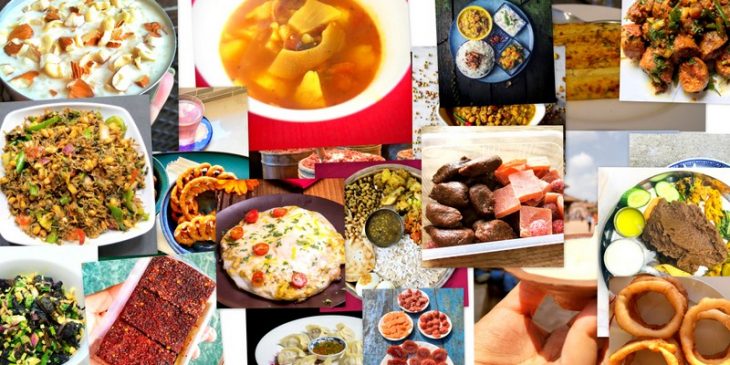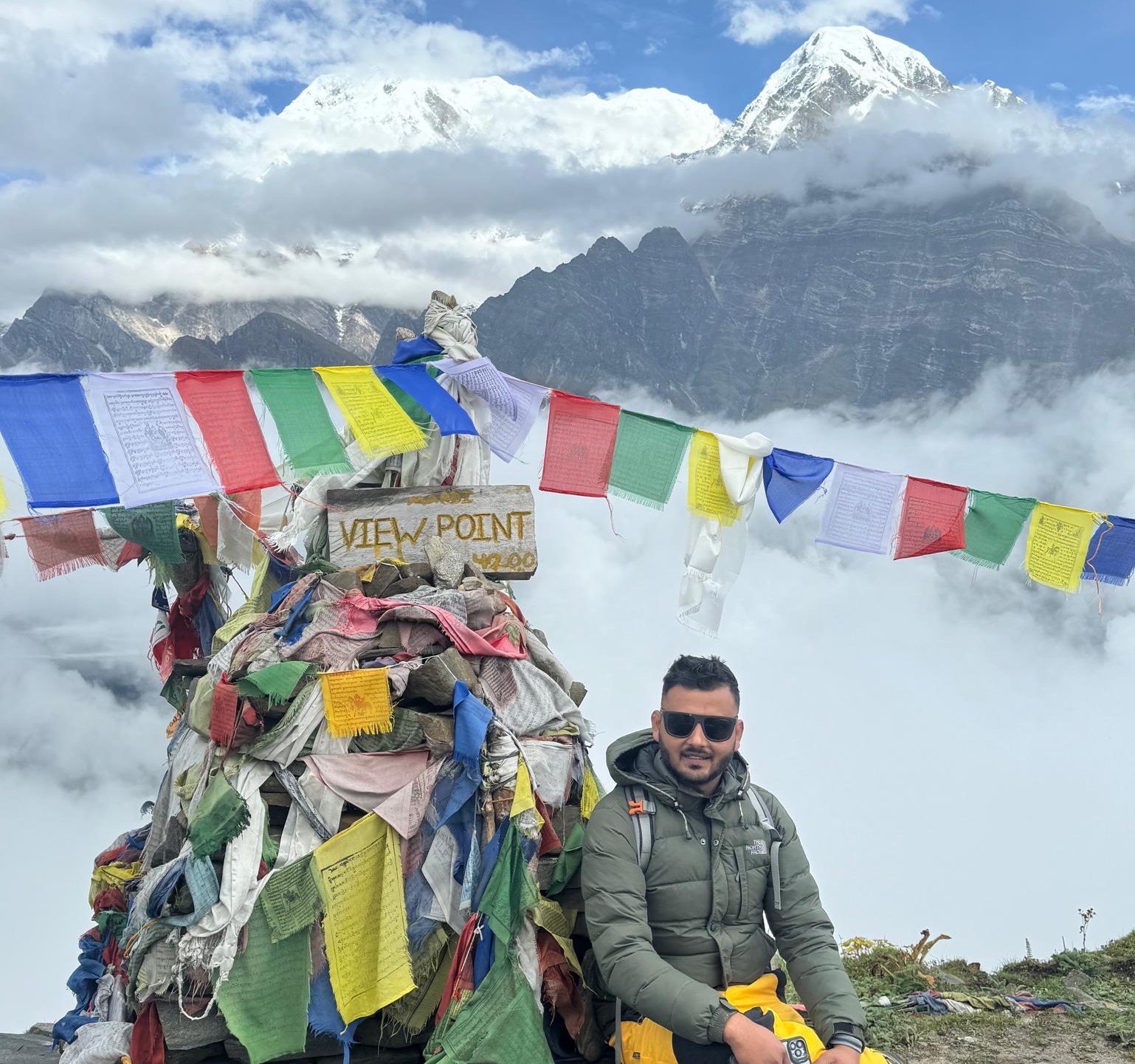
Nepal is a tiny nation in the Himalayas comprising more than one hundred ethnic communities. Each community has its own culture, tradition, language, religious beliefs, food cultures, and culinary traditions. Talking about the gastronomic variance, we will produce before you some of the foods you must try while you are in Nepal. If you ask Nepali people about their favorite food, 9 out of 10 will answer with a smile on their face, ‘Dal-Bhaat-Tarkari’. This particular dish comprises of lentil soup (dal), steamed rice (bhaat) and cooked seasonal vegetables (tarkari). Had there been any national dish proclamations in the world, Dal-Bhaat-Tarkari, the epitome of Nepali food, would have been the national food of Nepal.
It is quite known among foreign tourists that Nepali cuisine offers a variety of seasonal as well as ethnic food varieties with a touch of warmth and hospitality. People of different ethnic races and different geographical locations have their own authentic food items. As a matter of fact, the unique food varieties found in Nepal reveals the wide variety of culture and traditions prevalent in Nepal. A first-time traveler in Nepal may feel that the country lacks food varieties other than the staple Dal-Bhaat-Tarkari. But, the fact is most of the authentic ethnic cuisines are not so common among the top restaurants and eateries. Most of the true ethnic food items are cooked and served only at special places. Due to this very reason, most of the distinctive Nepali dishes are left overlooked.
It is a known thing to a frequent Nepal visitor that the food items available here has a unique taste and high nutritional value. Most of the food items are spicy bringing out the peculiar flavor to the tongue and odor to the nose. The most prevalent Newar community in Kathmandu itself has more than 200 food items, each prepared for a special occasion. When people go out for trekking in the mountainous regions, the food there seems to be somewhat influenced by the Tibetan culture. Food in the plains and the border areas of Nepal have flavors quite inclined to the Indian cuisine. On the whole, tourists get to enjoy a wide variety of tastes in Nepal right from spicy accompaniments to the plain boiled stuff.
Kathmandu alone has become a major food court with the ubiquitous presence of hundreds of cuisines from fine dining to the local street food. Sadly, Nepali cuisine hasn’t received international exposure yet, unlike the Indian, Chinese or Italian cuisines. Not many foreigners, who haven’t yet traveled to Nepal are aware of the impressive gastronomic delight offered by the Nepali food.
So, if you happen to be a person with an unusual pair of taste buds who would rather prefer a homely dish, options are abundantly available. And for those food adventurers, this is the best opportunity to appease your palate and salivate at the smell and sight of the unique cuisines here. From amongst the hundreds of delicious traditional Nepali dishes, we have tried to include the most popular items with unique flavors. Most of these food items may not be readily accessible to new visitors in Nepal as they may not be commercially available in all restaurants. We recommend that you should try these authentic Nepali dishes while you are here in Nepal. For trekkers, most of the items would be easily available during your time while trekking in Nepal. Here are 8 of our favorite food varieties:
1) Dal Bhaat Tarkari
Not much needs to be mentioned about the staple Dal Bhaat Tarkari for trekking enthusiasts as they will be eating mostly these twice a day during their trekking. For newbies, Dal Bhaat Tarkari is almost the national dish of Nepal eaten by the Nepalese two times daily. Dal means lentil soup, Bhaat is steamed rice and Tarkari is the cooked seasonal vegetables. This typical Nepali dish is served along with other supplements such as meat curries, salad, papad, pickles, and curd.
This Nepali cuisine also sometimes known as Nepali Khana has been slightly modified by a community from Mustang regions, Thakali and renamed the dish as Thakali Khana. Generally, all the items are similar with some extras. In the Thakali Khana set, one can taste a traditional staple dish made from buckwheat or millet flour known as Dhido. A little bit of both rice and Dhido is mostly preferred by the locals. However, tourists may opt to eat either of them or a little bit of both. Dal, the lentil soup in Thakali Khana is traditionally black lentil boiled slowly in an iron pot and later tampered with pure ghee, garlic and a special Himalayan herb Jimbu thereby making the lentil soup aromatic and giving smoky buttery flavor. With Dhido, fermented pickle or freshly made Sichuan pepper & tomato blend ground homemade pickle adds flavor to the dish.
2) Sel Roti
The famous sweet ring-shaped, hardened version of a doughnut prepared from rice flour batter that is deep-fried is Sel Roti. This dish is found mostly at the road-side snack stalls and small eateries at temple premises, bus depots and made in homes during celebrations and certain Nepali festivals. The circular rice flour bread has a crunchy texture on the outside and a soft surface in the inside. To add taste, sugar is added along with butter and certain spices like cardamom to the batter before deep-frying it. It is a compulsory dish in every Nepali home during the festival of lights, Tihar. This circular sweet rice flour bread is normally eaten together with yogurt, potato or gram curry and other veggies and milk tea.
3) Momo
Although Momo is believed to have been originated from Tibet, the Nepali people have made a slight twist to the original dumpling, making it better in taste. The Nepali version of the Tibetan dumplings highly remodeled with typical Newari seasonings to suit the Nepali tang. If you ask a person who has eaten Momos in Tibet as well as in Nepal, 90 percent of them will say Nepali Momos tastes better. Apart from the Nepali crowd, Momo has won the hearts of millions of foreigners who visit Nepal every year. Momo, also sometimes known as Momo Cha, is a small bite-sized dumpling filled with seasoned stuffing including finely chopped vegetables, minced buffalo or chicken or mutton. These dumplings are then steamed to be cooked.
Variations include deep-frying the momos called fried momos, semi-steam and semi-fried momos called Kothey momos, and C-momos which are either steamed or fried momos served by dipping in spicy hot thick soup. In the present day, many uptown restaurants also have come up with several variations of momo fillings such as sweets, paneer, chocolates, cheese, potatoes, khoa (dried whole milk) and so on. Once the momos are cooked, they are ready to serve hot with large helpings of spicy local ground pickles for the purpose of dunking.
4) Chatamari
The Newari Rice Crepe with minced meat and egg often referred to as Nepali pizza for foreigners, is another authentic Newari cuisine. It is a round-shaped dish prepared from thin rice flour batter which is topped with egg and minced meat or vegetables as preferred with spices and savory toppings. The bread, basically a rice pancake is cooked on a frying pan without flipping it, unlike the other flatbread varieties. The toppings could be chopped onions, fresh coriander, chilies besides egg and minced meat. This round flatbread is mainly prepared in most of the Newari festivals as it is considered healthy and good food to eat. Once the dish is ready, it is served with fresh tomato home-made ground pickle. One of the key ingredients of Newari cookery is the smoky-nutty flavor of roasted mustard oil and in the case of Chatamari, it is no exception.
5) Bara
Bara is a popular Newari snack also known as Wo in their language. It is nothing but black lentil cake in the form of a fried pancake. Bara is prepared by ground black lentil batter topped with either an egg, minced meat, boiled potatoes, or beans with spices. It can be eaten plain without toppings as well. The batter is fried in a pan sprinkled with smoky-nutty mustard oil to bring out the peculiar Newari identity. The final texture of Bara is light and spongy, soft and fluffy with a savory taste. It holds a high cultural significance amongst the Newari communities. The dish is served with fresh ground tomato home-made pickles or a thick broth prepared from buffalo meat.
6) Yomari
Yomari, in a straight case, is a steamed, fish-shaped and pointed rice flour cake or dumpling. It contains sweet fillings of molasses or jaggery (or khoa), roasted sesame seeds, and coconut. It is a very popular Newari dish that supposedly has its own festival known as the Yomari Punhi. The festival falls on the full moon day in the month of December. The festival connotes the end of the rice harvest. On the full moon day, Newar communities inside Kathmandu valley offer prayers and worship the Annapurna, the goddess of grains. This steamed dish is only prepared by the Newar community and believed to kill the cold after ingestion. At the end of the harvest season, Yomari is prepared and offered to the Gods. It is a sign of indebtedness for supporting the farmers to acquire a good harvest.
The fluffy-steamed rice cake is considered to be one of the exotic desserts of the Nepalese people. The jaggery and roasted sesame seed give Yomari a sweet, softly bitter and nutty flavor. On a closing note, Yomari is hard to find in small road-side eateries, food stalls or uptown restaurants. While it is prepared in almost all the Newari homes, especially during the Yomari Punhi Festival.
7) Samay Baji
Samay Baji is a popular traditional Newari dish in Kathmandu. It comprises of several food items and is specially prepared for Newari festivals or other special occasions. This peculiar dish has in fact, been passed from one generation of the Newar community to the next. Lately, this delicious food item has been made available in most of the food stalls and small eateries. These eating places have labeled themselves with a tag of ‘Newari Khaja Ghar’.
This special dish comprises of mainly Chiura (beaten rice) with so many supplements as side dishes. Choila (smoked meat), fried soybeans, boiled eggs, sliced ginger, spicy beans, leafy vegetables, fried pancakes (bara) are some complements. The most prevalent complement is the home-made whiskey known as Aila. Some hosts also prepare an additional item known as Alu-Tama. It is a spicy curry made from bamboo shoots, dried beans, and potato. A complete plate of this delicacy is filled with mouth-watering flavors reflecting the unique feeding habits of Newari people. It can be regarded as one of the most diversified foods in Nepal. It is sure to appease each of your taste buds.
8) Kheer
Kheer is one of the sweet delicacies popular in the Nepali food menu. This sweet dish is specially prepared during occasions like various religious rites, weddings, and other sacred celebrations. This rice pudding is a sweet dish, easy and fast to cook. To prepare this sweet dessert item, rice grains, sugar, butter, raisins, cashew nut, and small coconut pieces are required. All ingredients are added to boiling milk and stirred at regular intervals. It is cooked to a very thick broth-like pudding. In Nepal, the 15th of Shrawan is popularly known as the Kheer eating day due to climatic superstitions.
Bonus Treats in Nepali Cuisine
The above mentioned were some of our favorite picks. Besides, there are so many more local dishes and short-snacks found in Nepal. We have added some more local food items as bonus treats for your palate. Tying them once during your stay in Nepal would be an unusual gastronomic experience of a lifetime.
- Gundruk: Fermented leafy green vegetable, commonly eaten as vegetable soup or made into pickles. It is the Nepali version of the Korean cuisine, Kimchi with a slight twist.
- Choila: Traditional Newari dish prepared from buffalo meat. Nowadays it is also available in duck and other meat versions. It could be an important component of Samay Baji.
- Dhido: Traditional Nepali food made by cooking maize flour, buckwheat flour or millet flour with hot water. The mixture is continuously stirred to form a slightly hardened pudding-like dish. It is often eaten with Gundruk or Nettle soup and home-made tomato pickle.
- Kwati: A popular traditional Nepalese soup prepared particularly during the cold seasons. It is prepared with nine different bean varieties such as soybeans, green peas, cowpeas, chickpeas and more.
- Alu Tama: A unique Newari curry dish. It is prepared with potato, bamboo shoots and dried beans that is slightly sour in taste. Sometimes, it is complemented along with Samay Baji.
- Sukuti: Slices of fresh red meat (buffalo or goat) sprinkled with salt. The meat is hung over the fireplace until it is completely dried. It can be consumed as it is or made into a pickle by adding spices.
- Juju Dhau: The king curd that is made from buffalo milk. It is a thick, creamy, sweetened yogurt normally served in clay pots. Usually, it is an important supplement to many Newari dishes.
- Tongba: A traditional millet-based home-made alcoholic beverage. It is sometimes known as the Tibetan hot beer. It is served in a cast-like vessel and sipped through a bamboo straw.
- Pustakari: A Nepali hardened sweet. It is prepared from Khoa, sugar, peanut powder, coconut and seasoning powder.
- Titaura or Pau: Literally meaning sour in Newari language. This treat comes in various shapes, sizes, and tastes. Usually, it is prepared from local fruits like hog plum, tamarind, mango, lemon, orange and many more.
- Lakhamari: The most popular sweetmeat prevalent in the Newari community. It is a crispy mouth-watering delicacy available in different shapes and sizes.
Epilogue
We have tried to incorporate most of the popular food items here. They are surprisingly prevalent in most parts of the country. Here is another startling fact. Most of the above-mentioned food items are not found in most of the restaurants and hotels. These delicacies have found their presence in road-side eateries, small snack stalls, temple-side food stalls, and temporary food cabins. Make a special request to the supervisor or a manager at the hotel where you stay. These special food treats will be made available to you to fulfill your food urges.



















